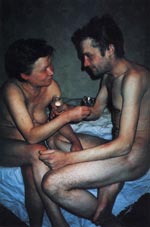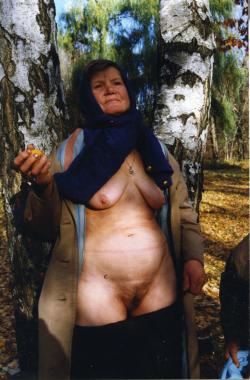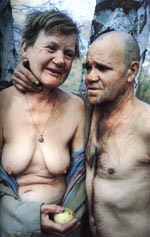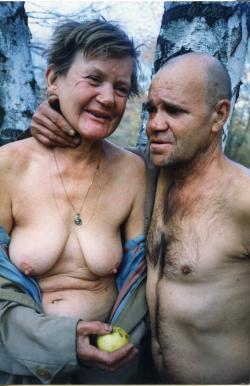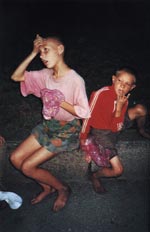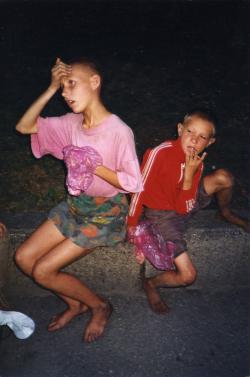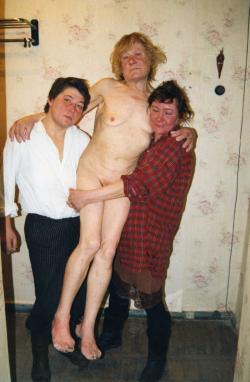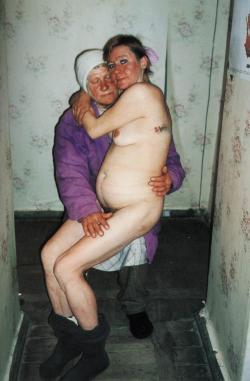MKH0195.jpg)
MKH0187.jpg)
MKH0257.jpg)
MKH0061.jpg)
MKH0459.jpg)
MKH0189.jpg)
MKH0471.jpg)
MKH0253.jpg)
MKH0279.jpg)
MKH0090.jpg)
MKH0084.jpg)
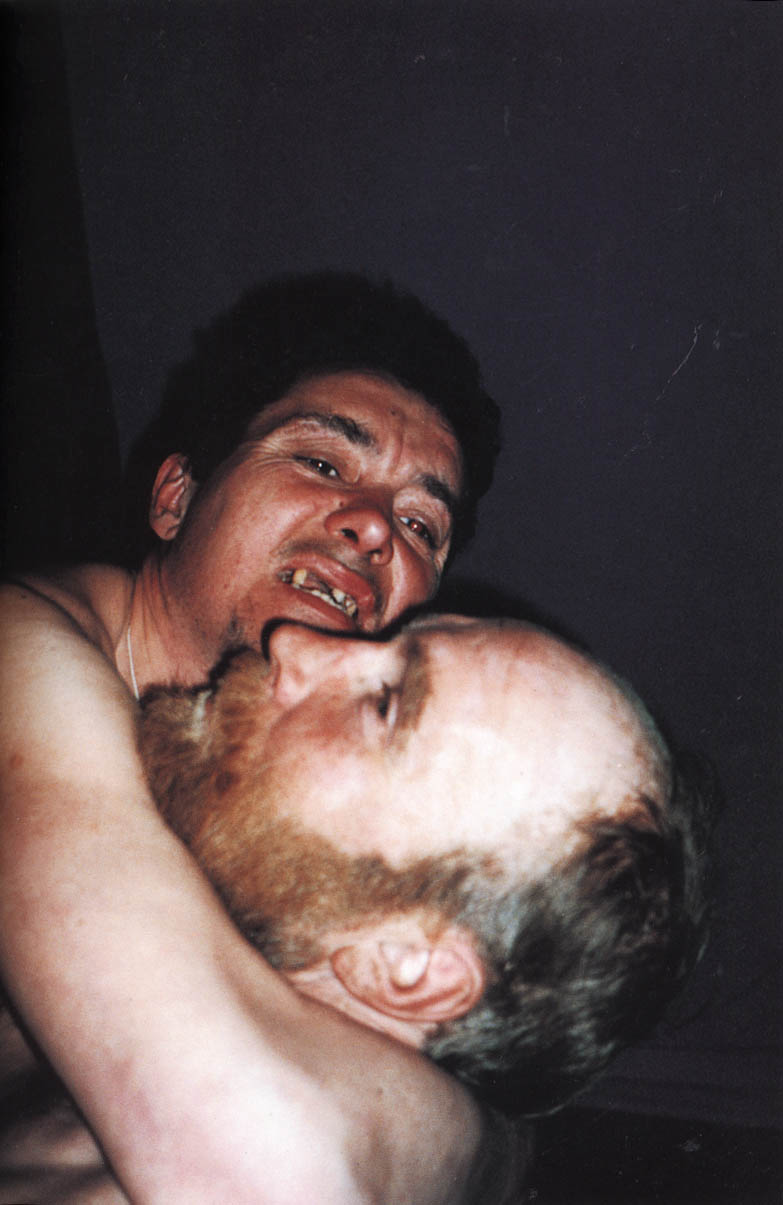
MKH0107.jpg)
MKH0171.jpg)
MKH0077.jpg)
MKH0063.jpg)
MKH0174.jpg)
MKH0265.jpg)
MKH0269.jpg)
MKH0356.jpg)
MKH0457.jpg)
MKH0447.jpg)
MKH0287.jpg)
MKH0239.jpg)
MKH0235.jpg)
MKH0295.jpg)
MKH0231.jpg)
MKH0285.jpg)
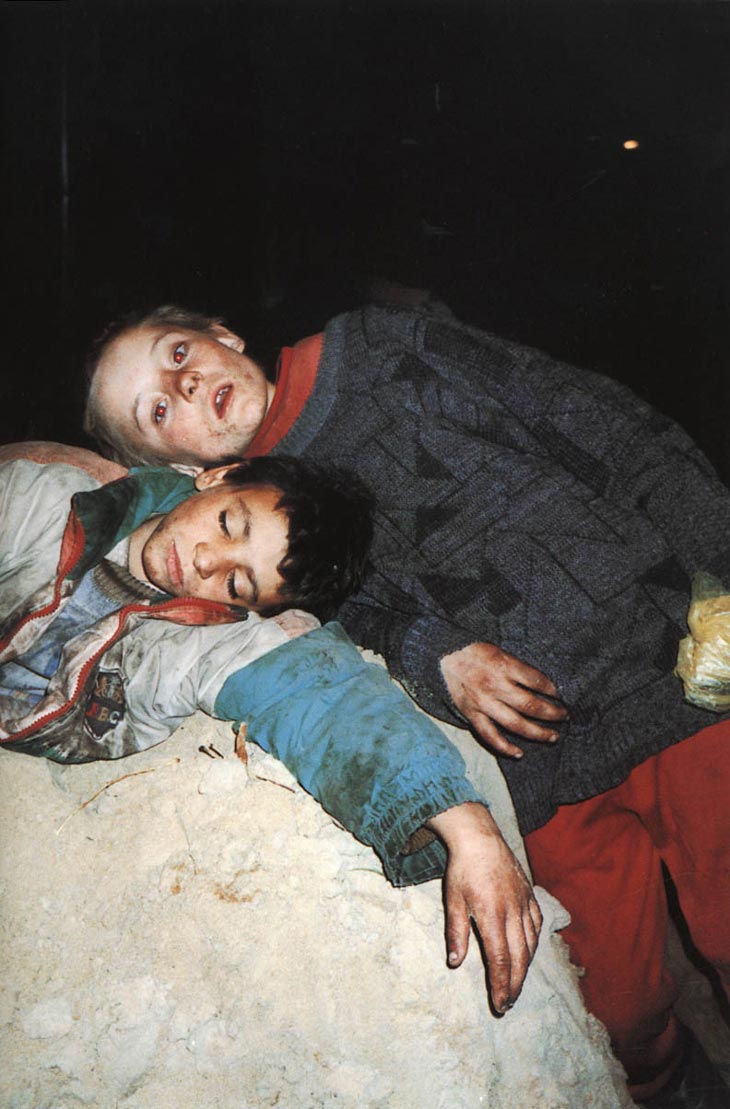
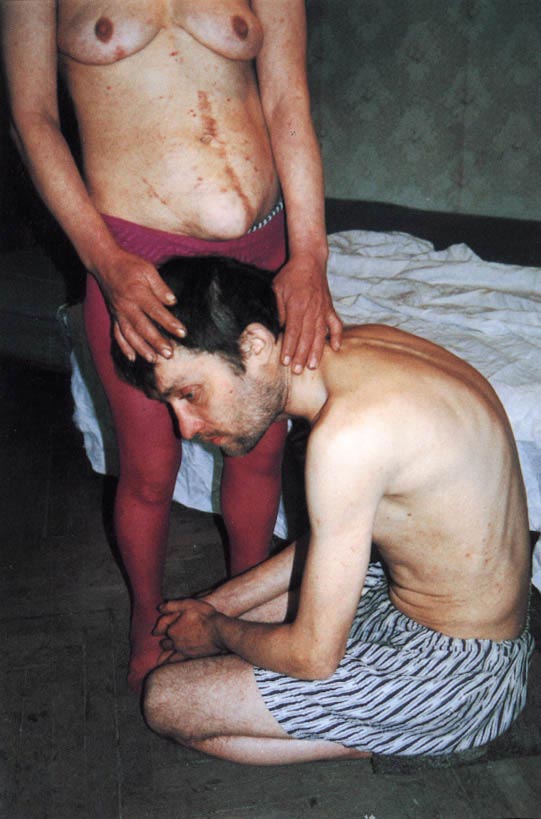
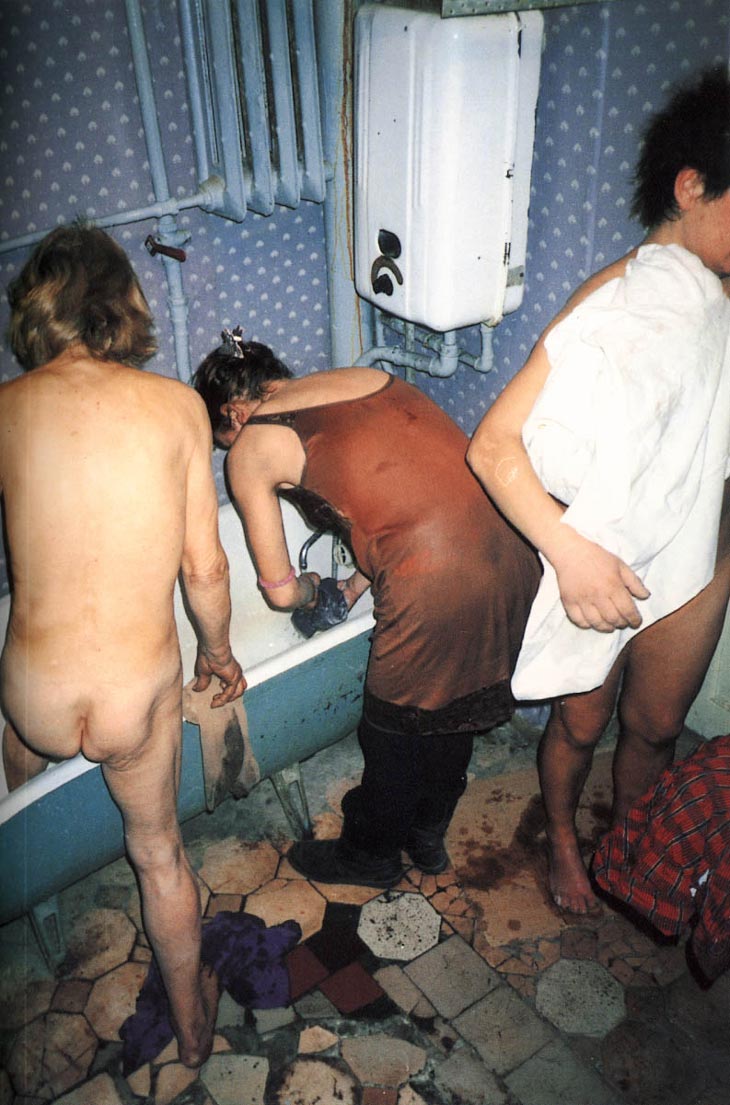


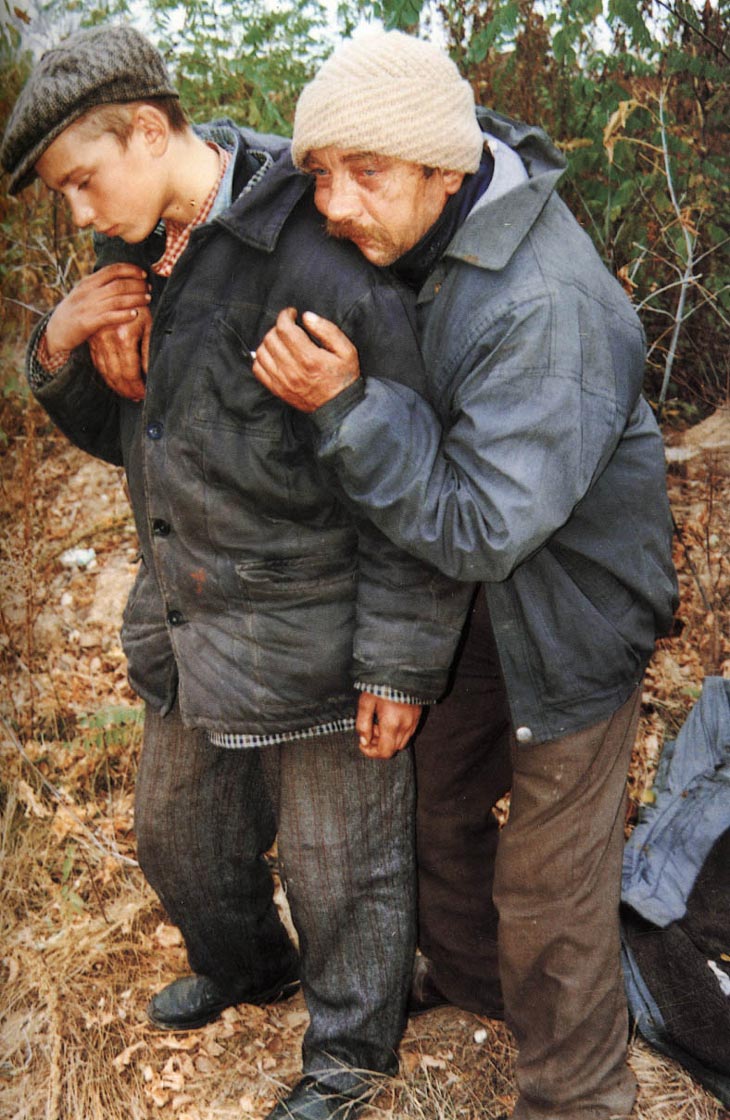

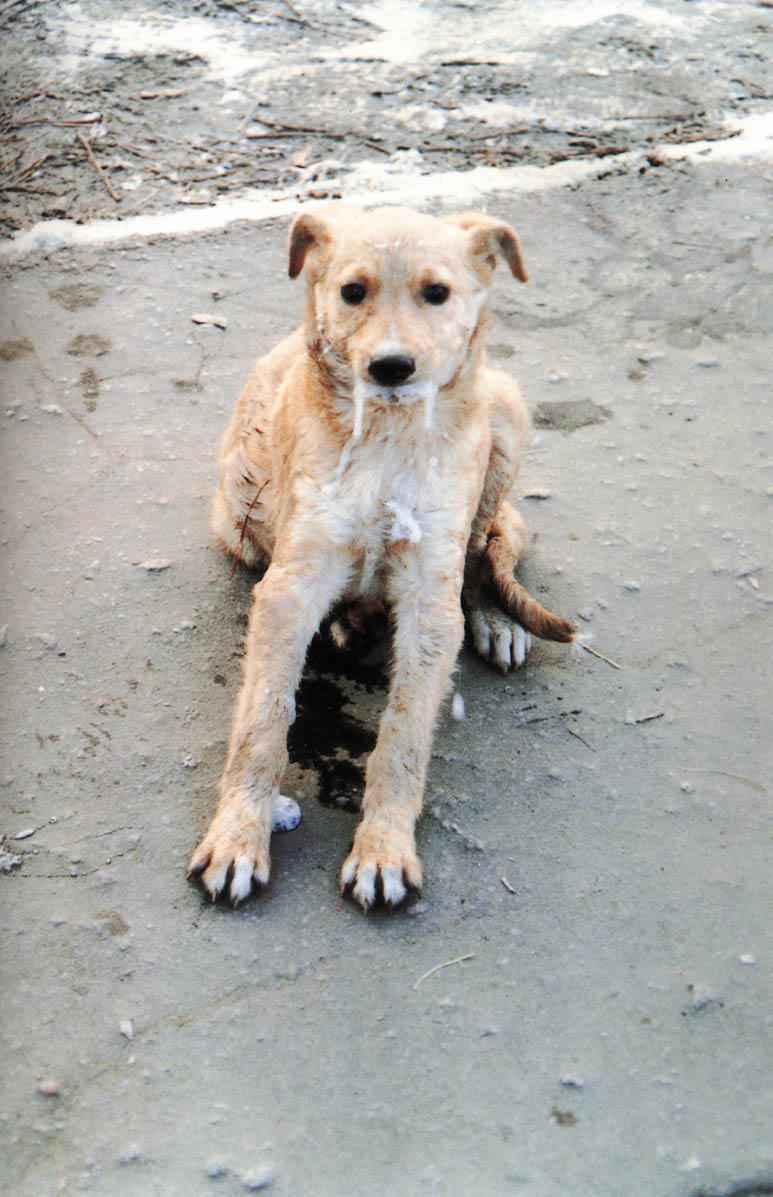
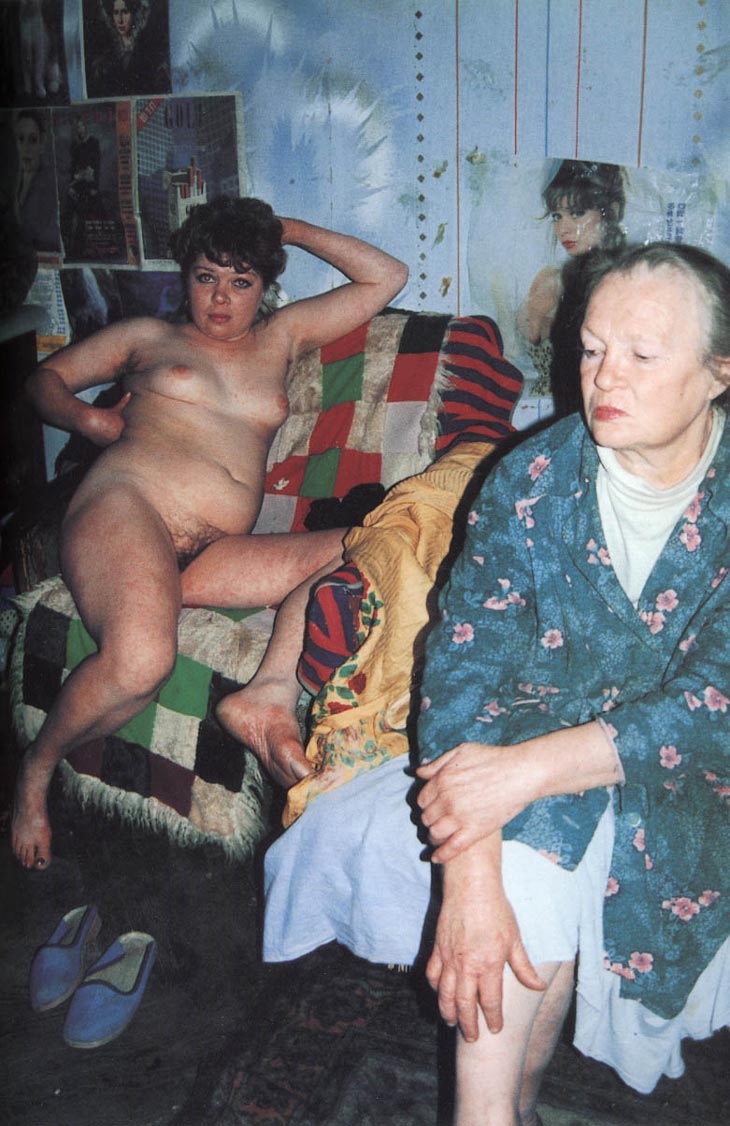

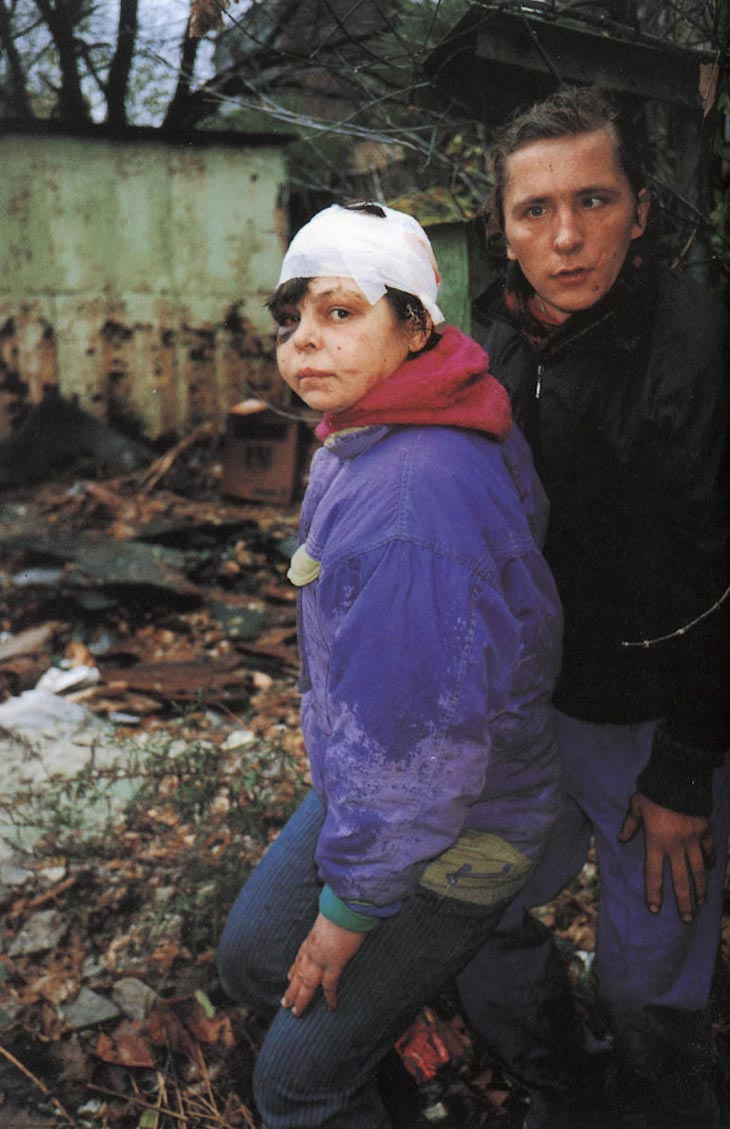
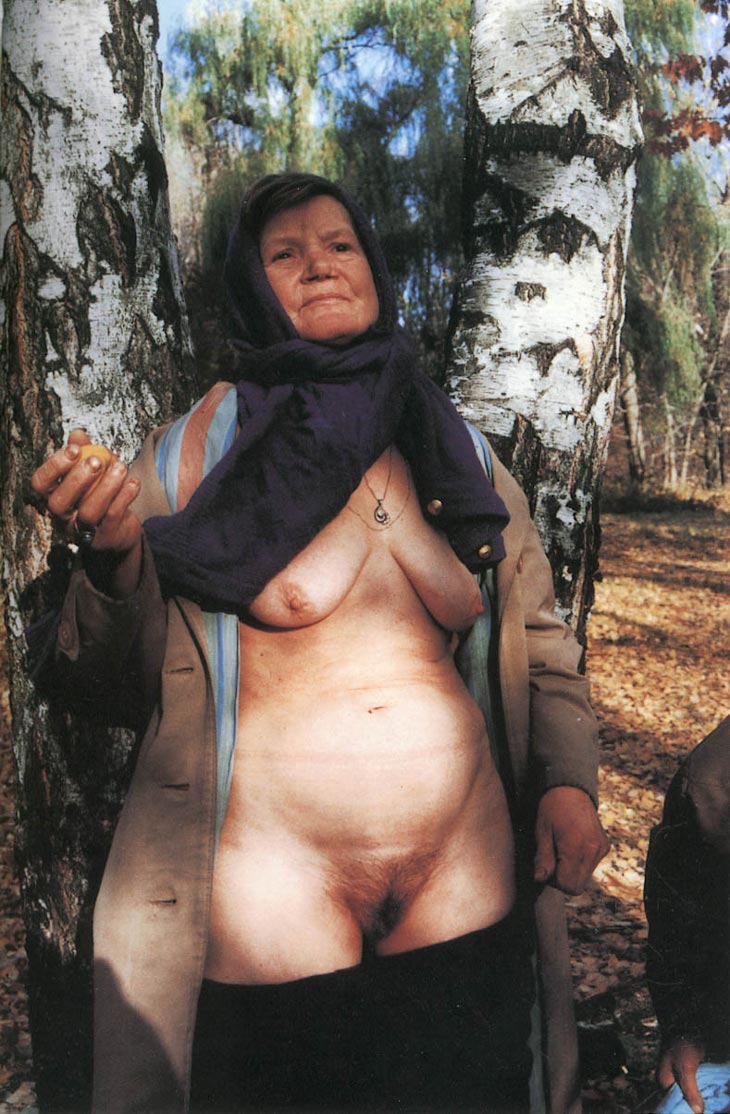



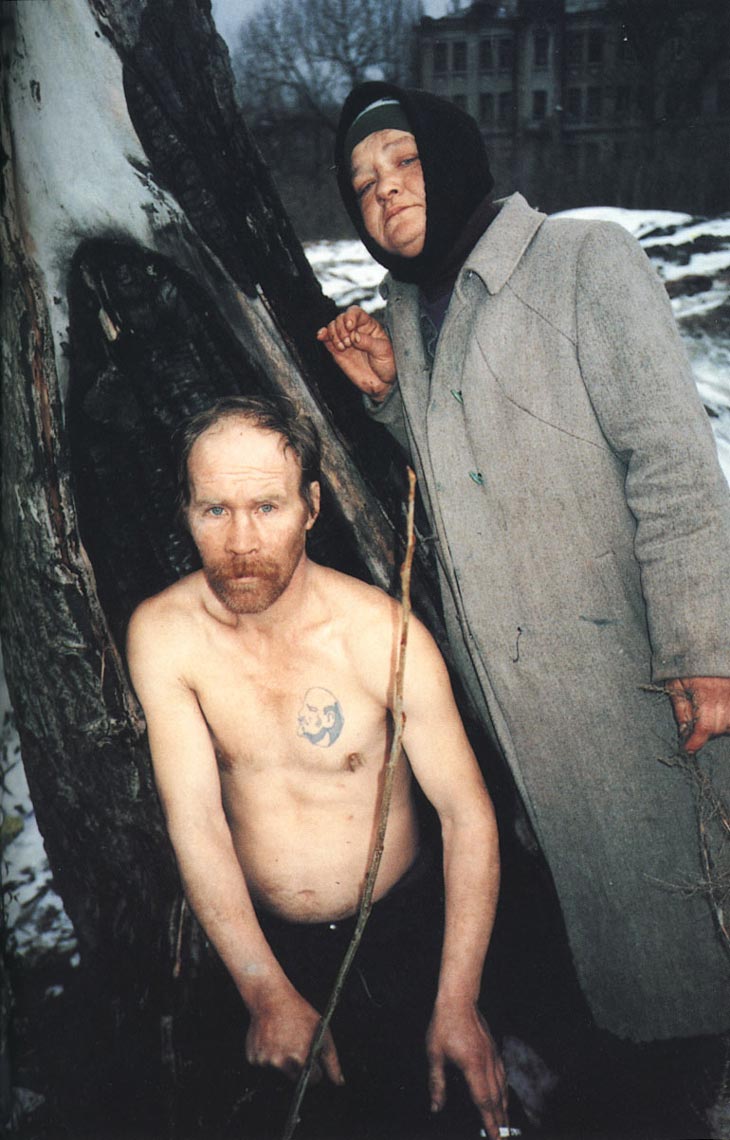
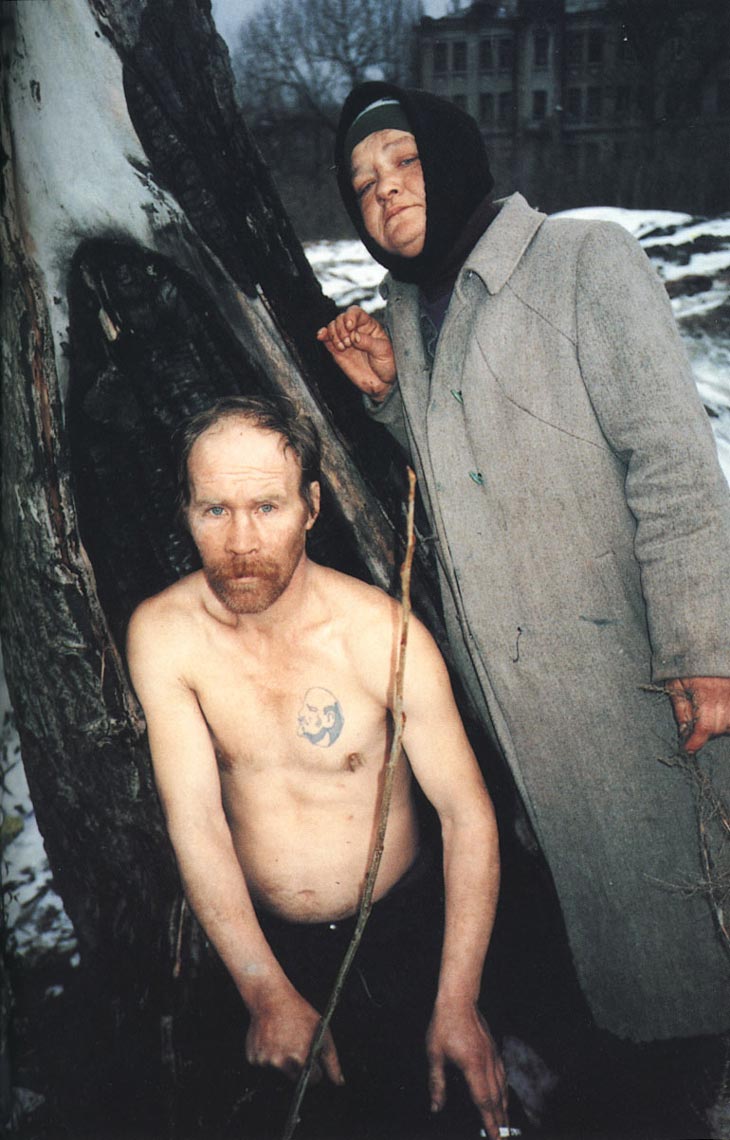
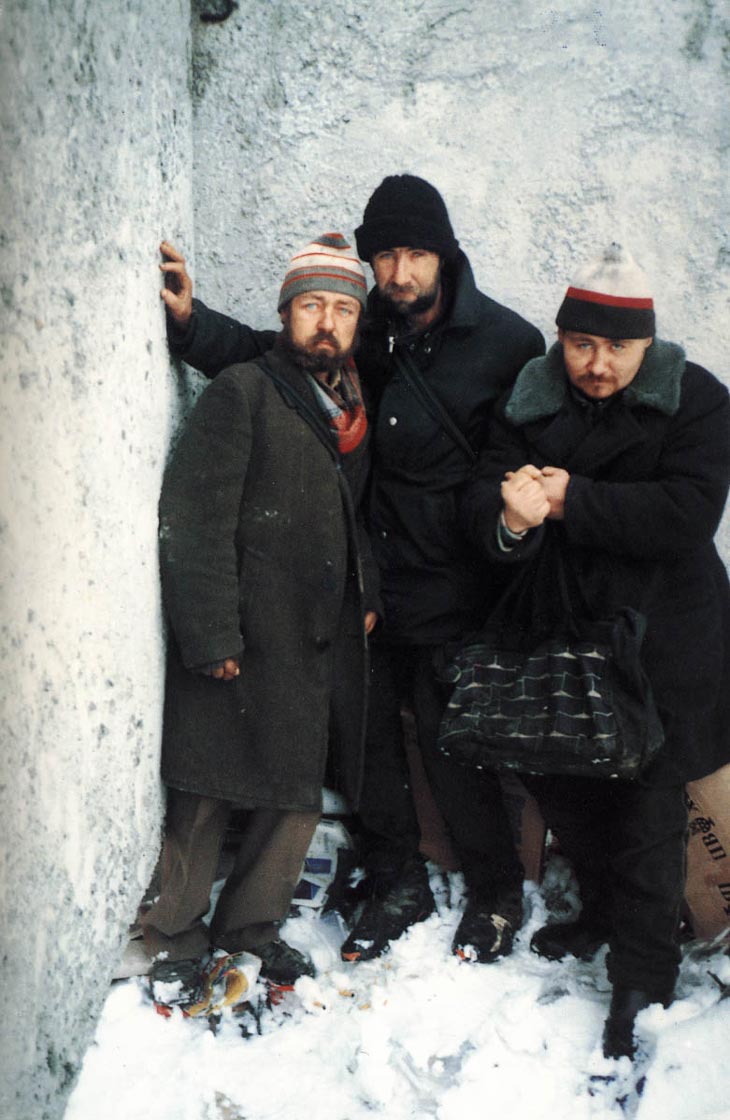
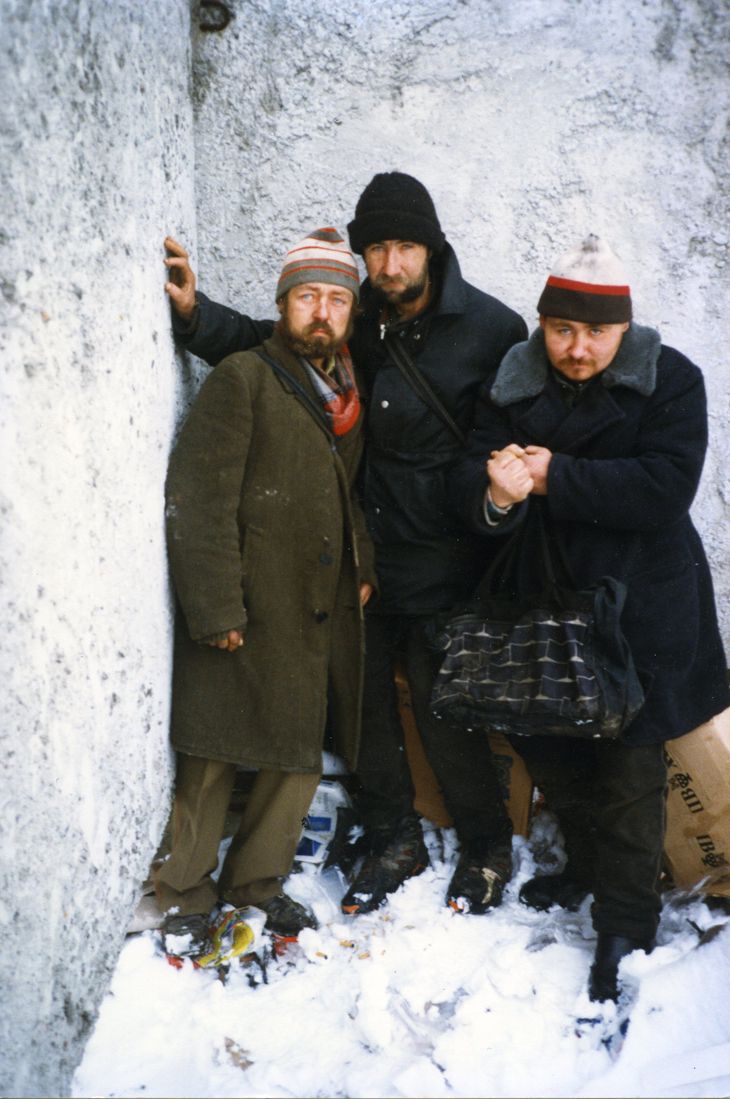
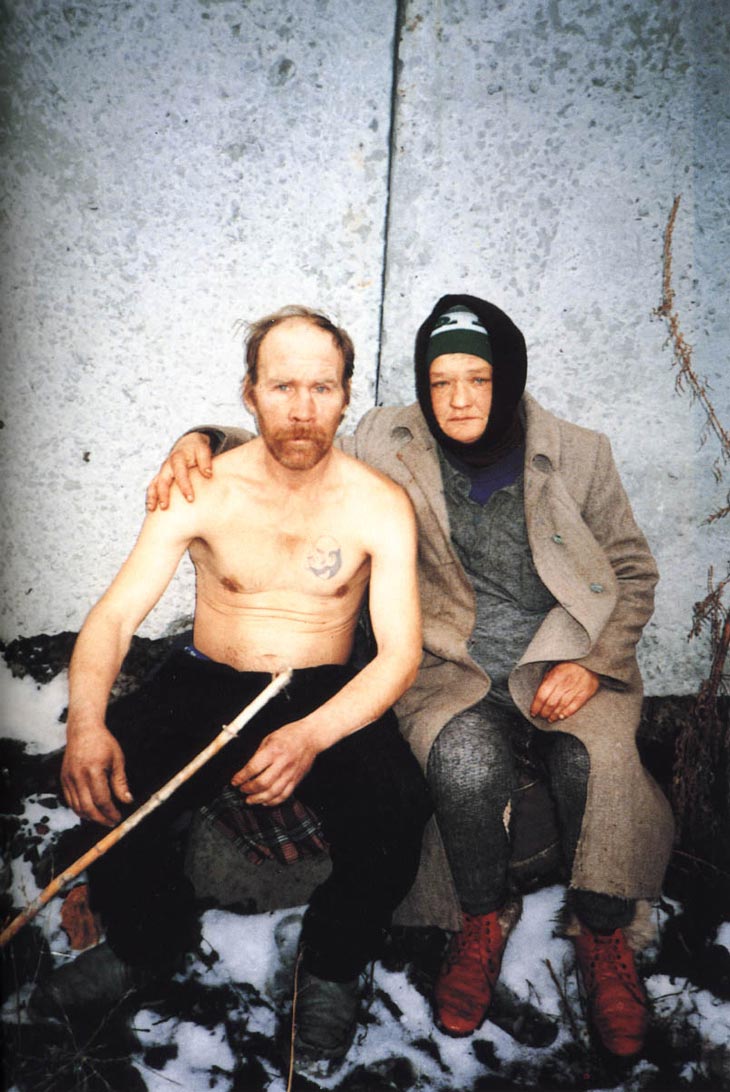

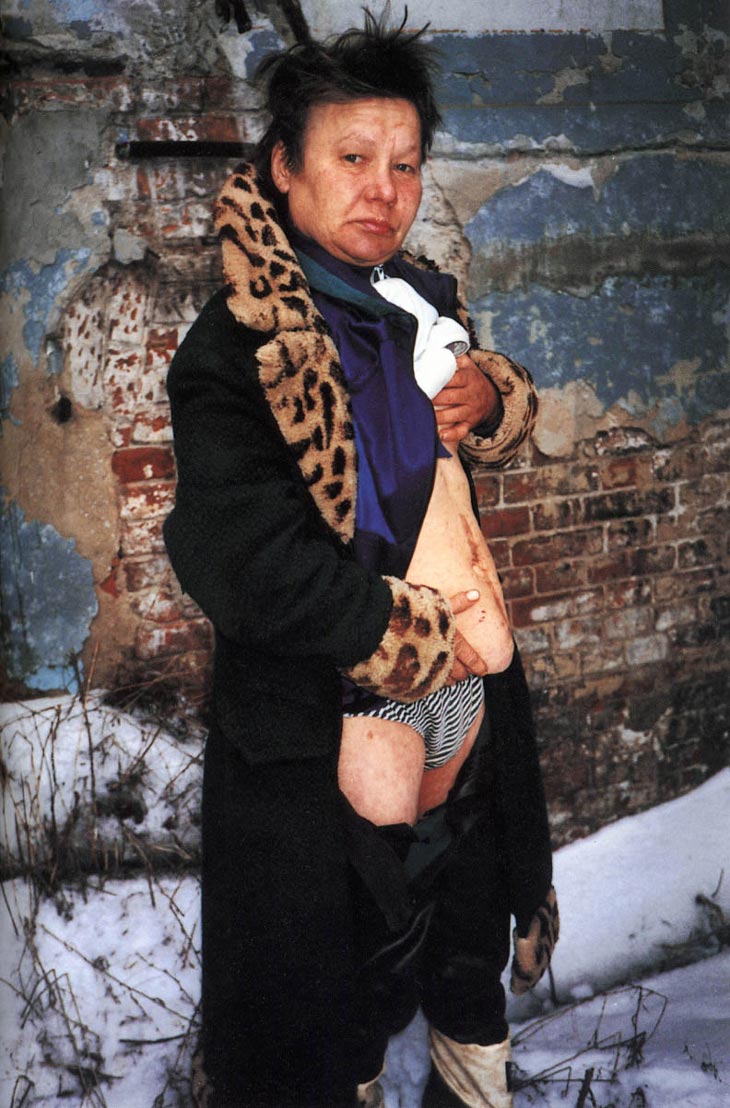
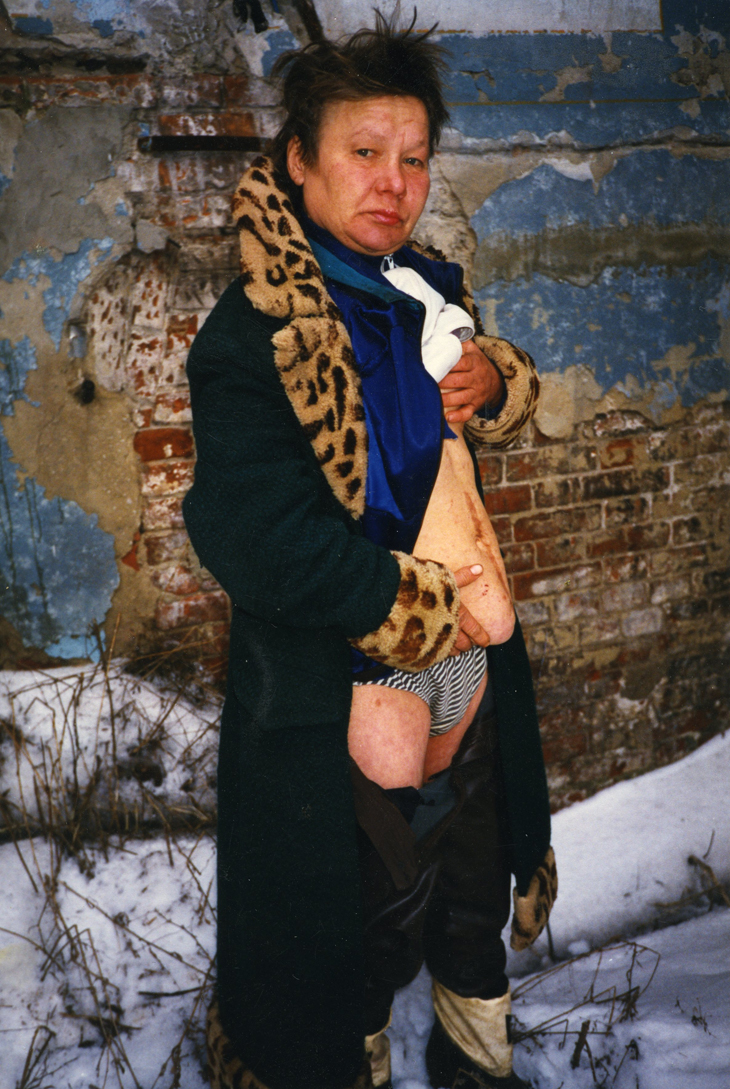
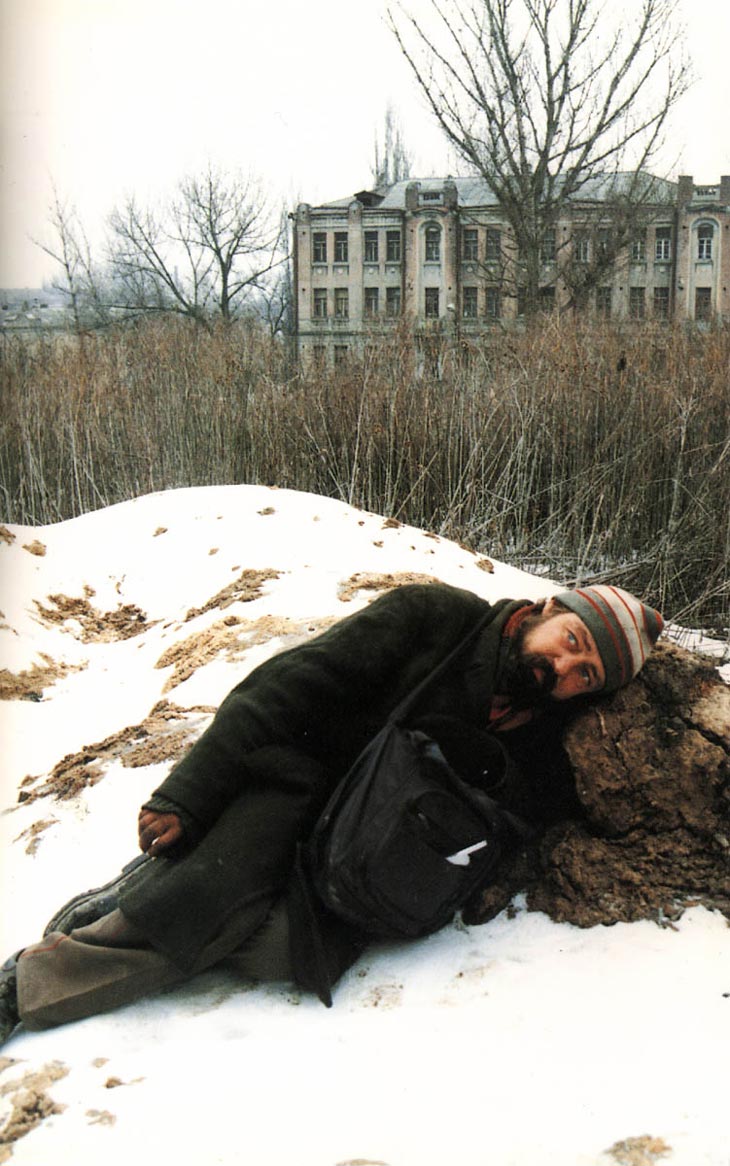

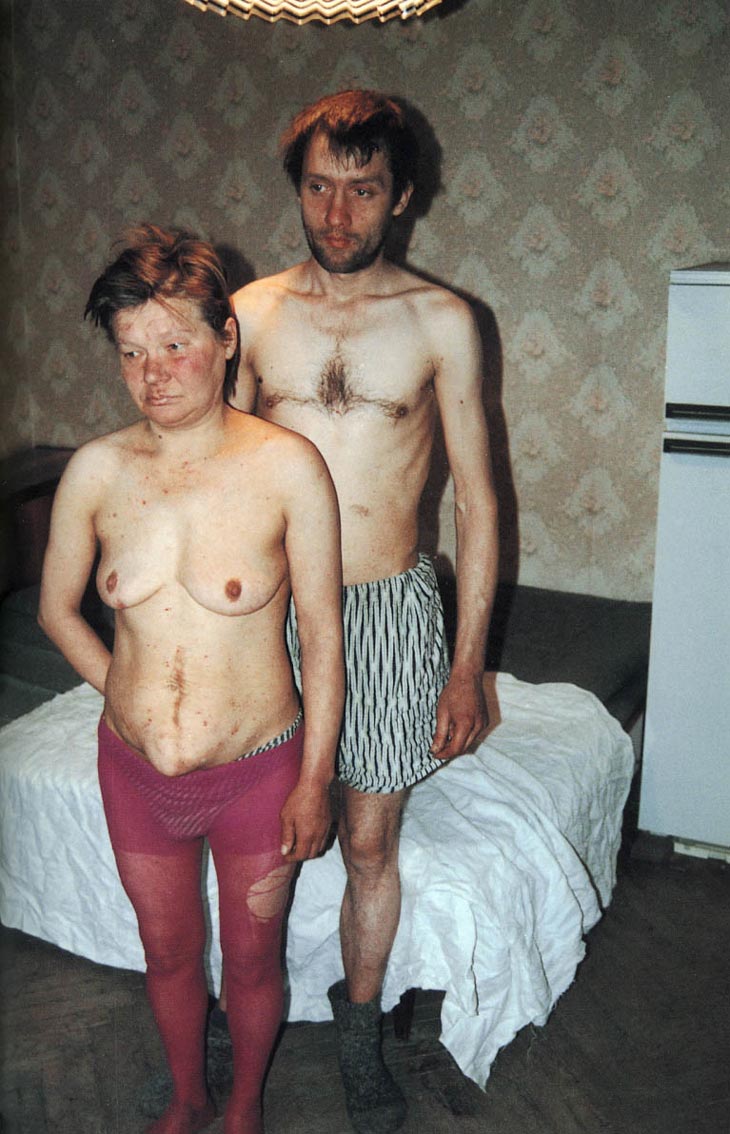
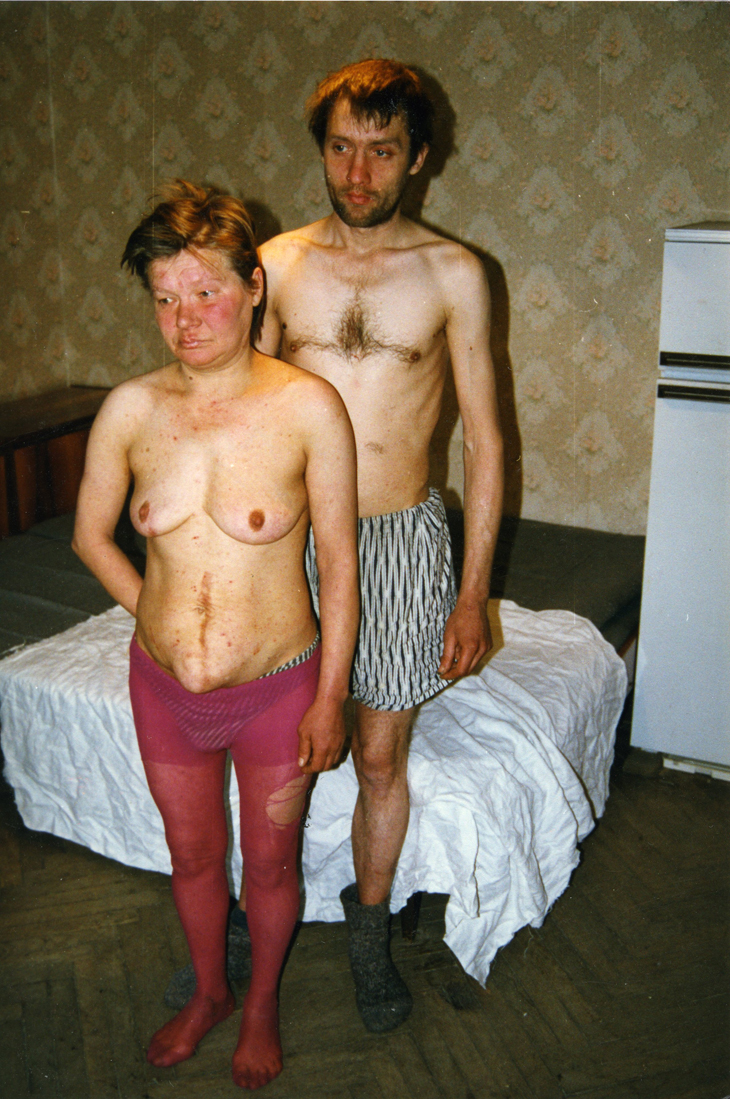



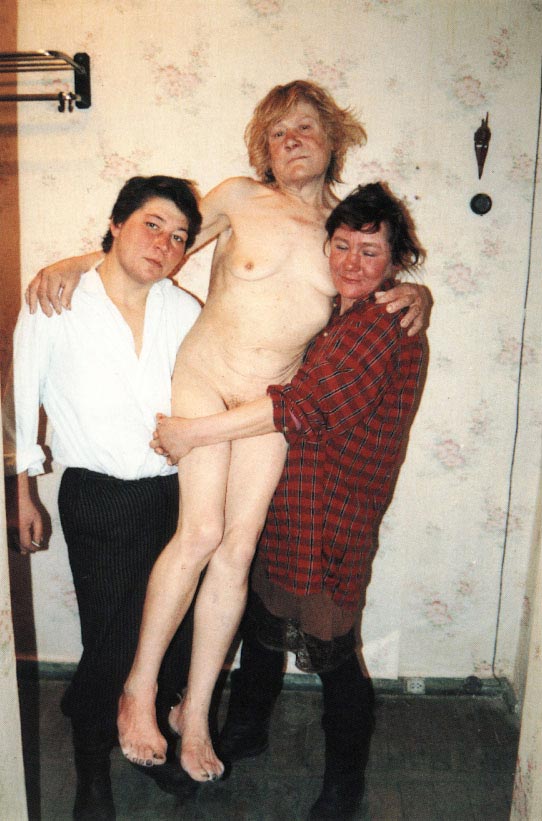
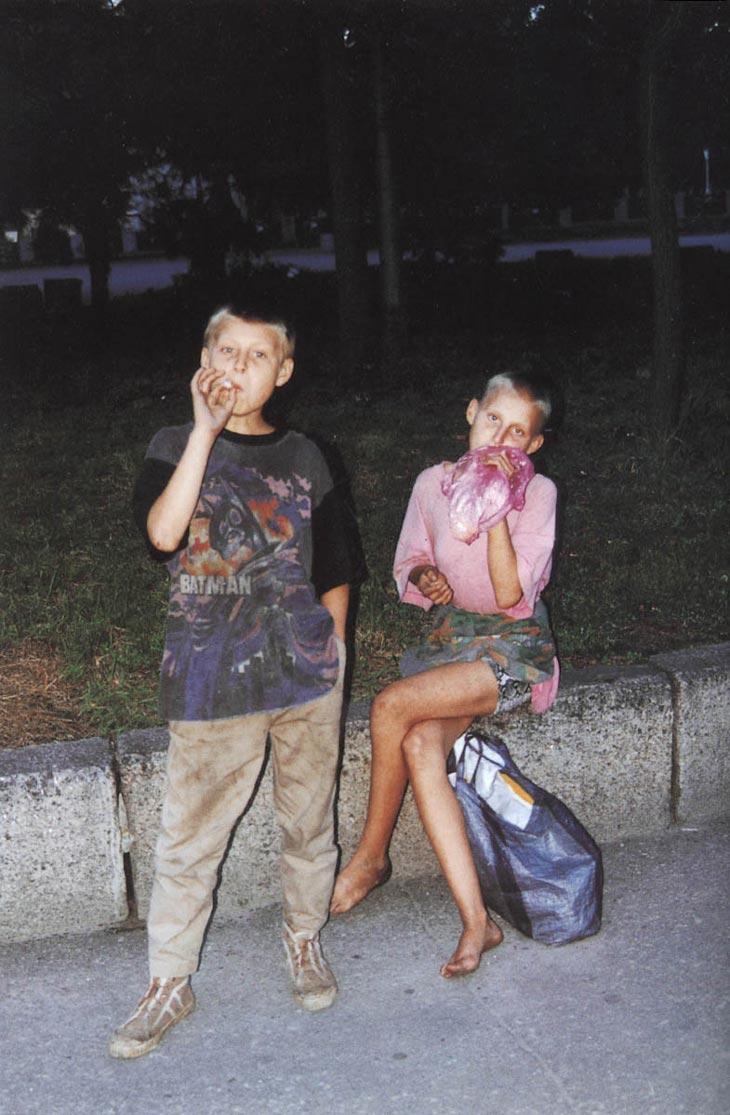
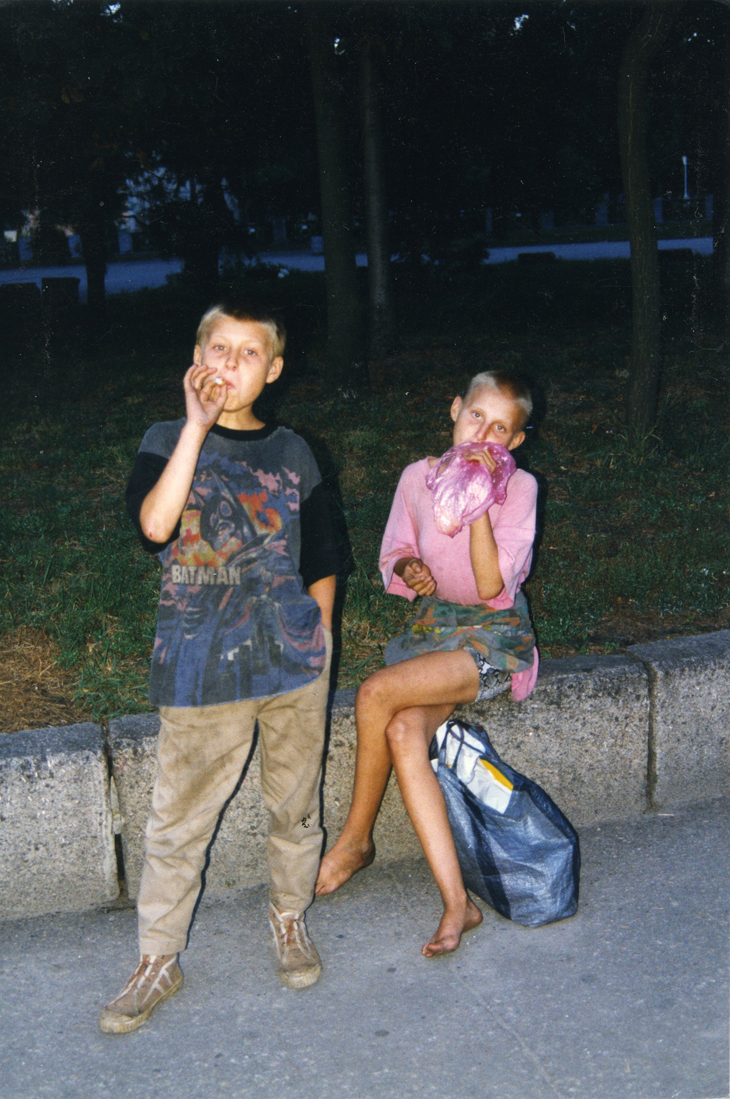
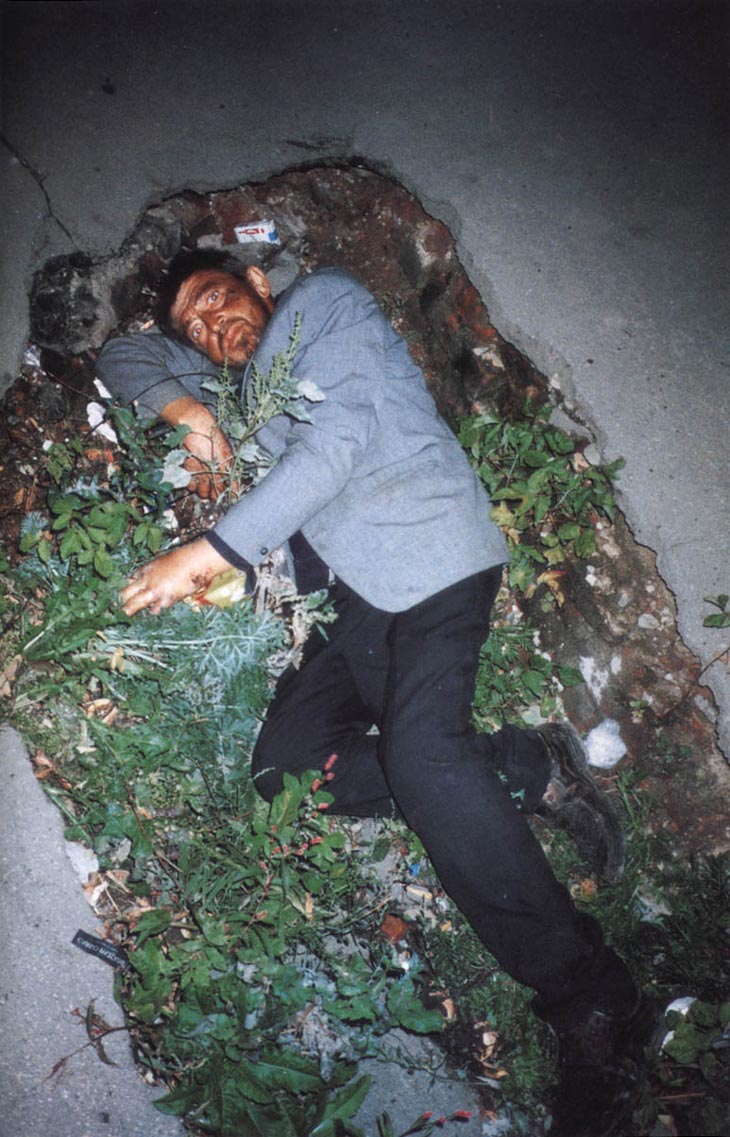
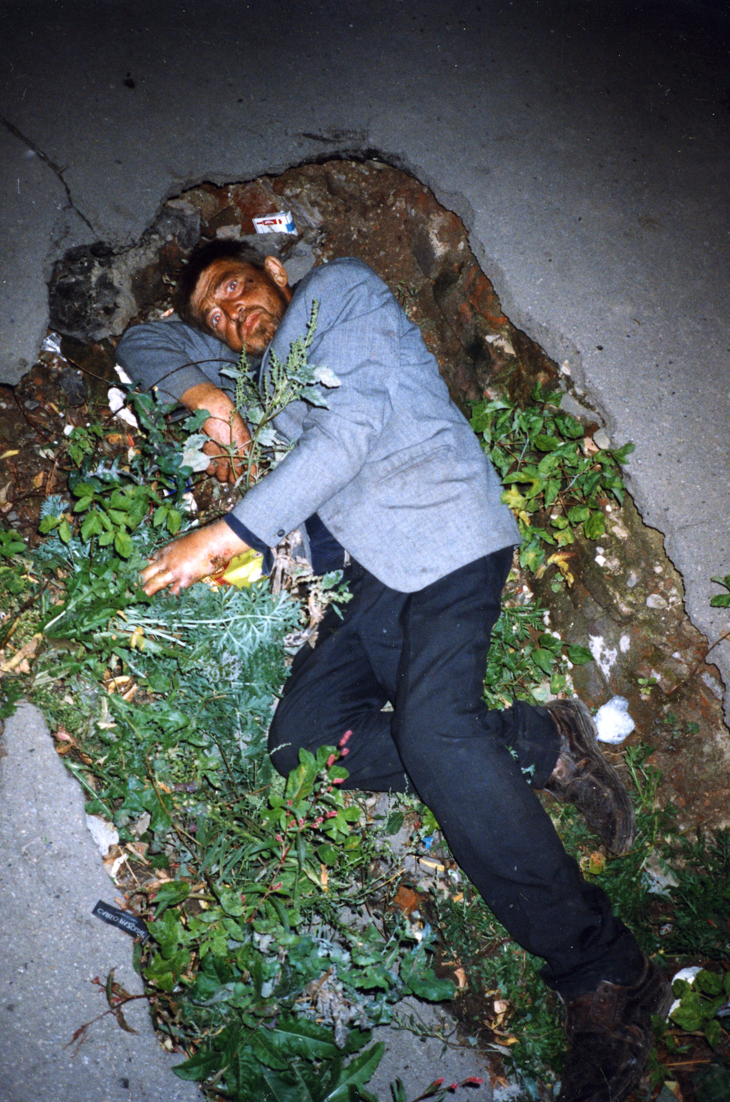

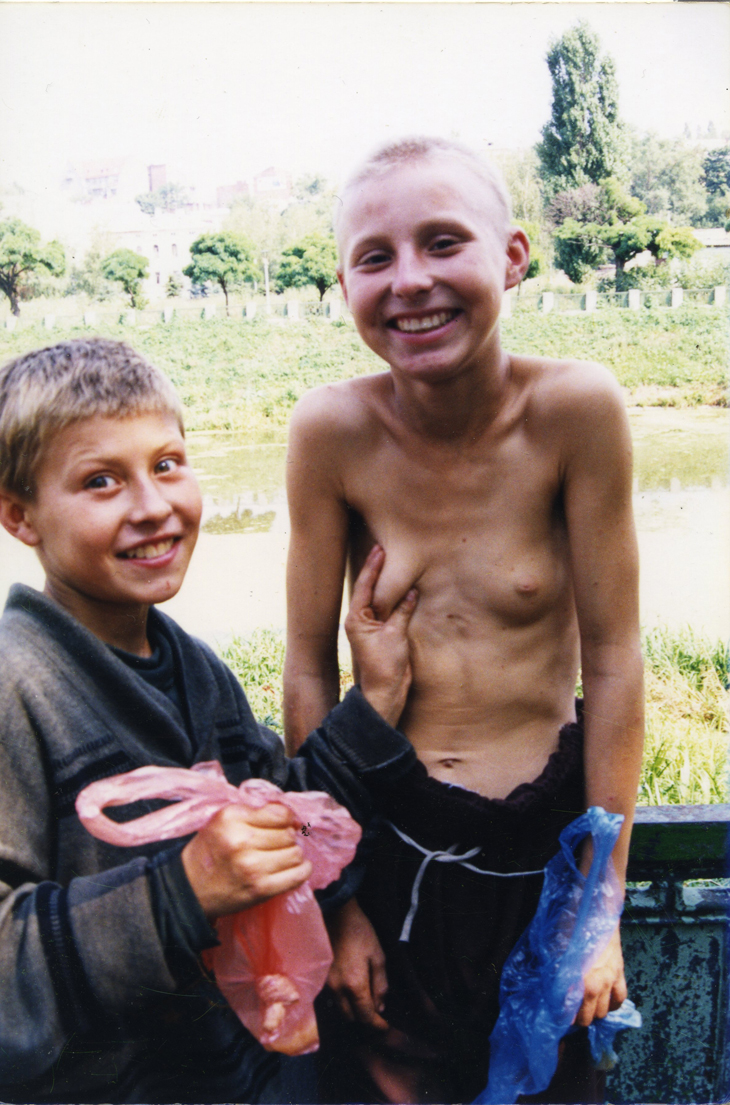
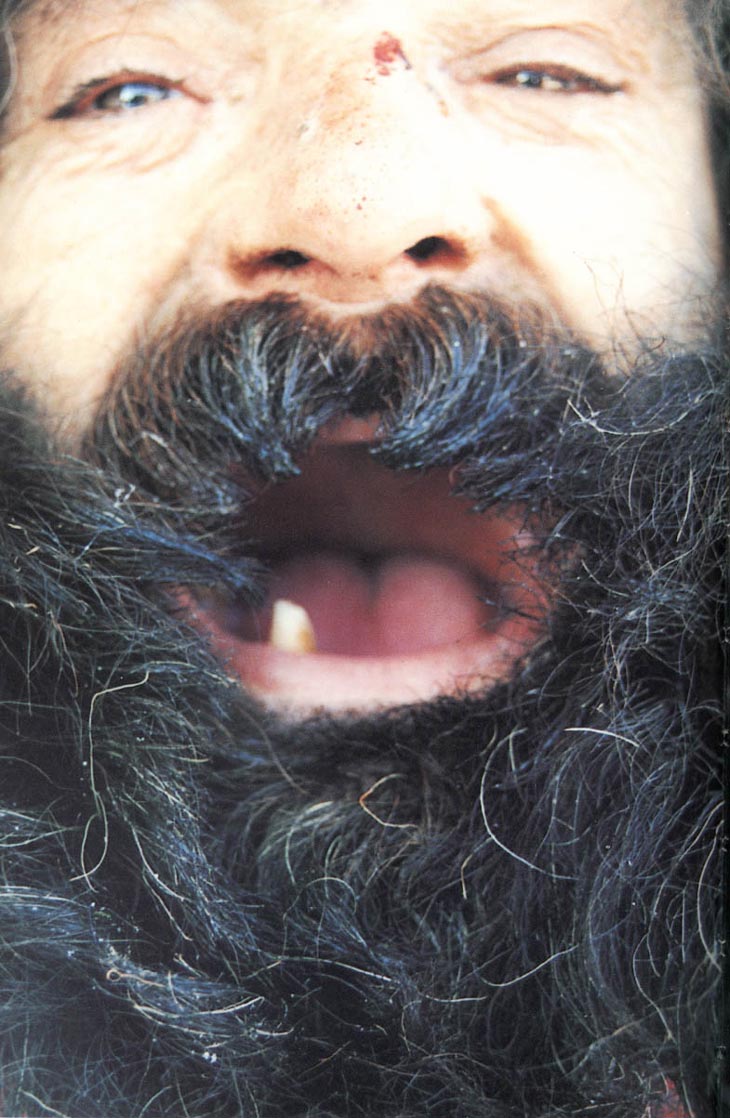
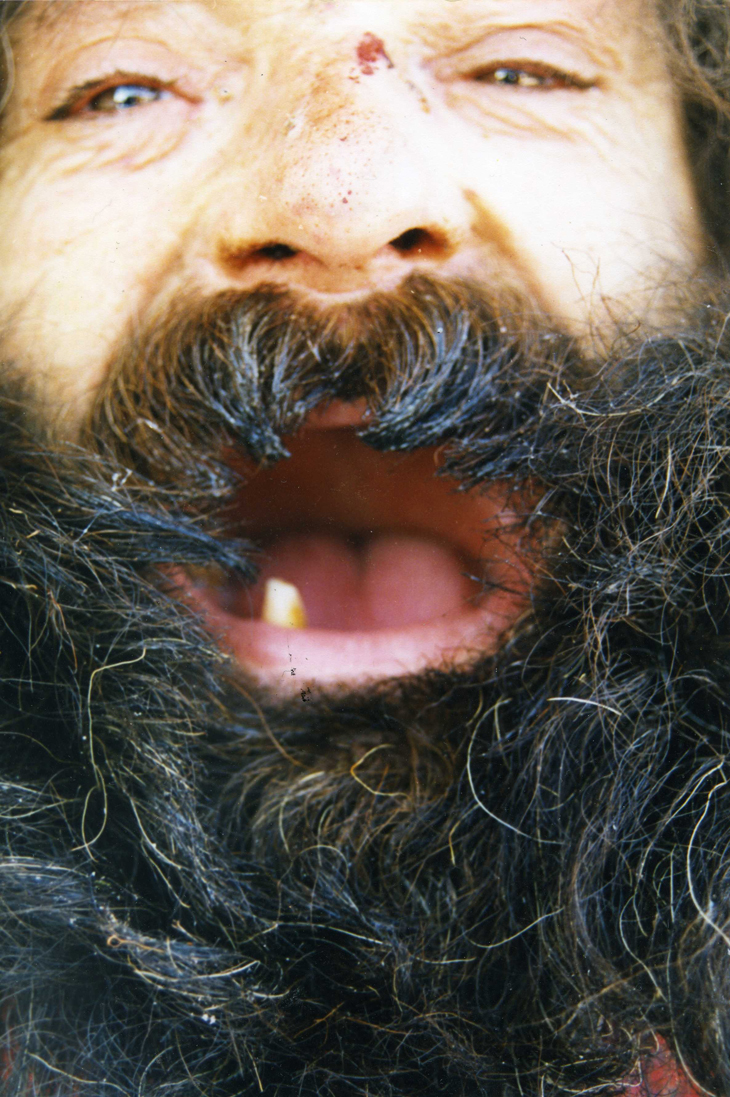
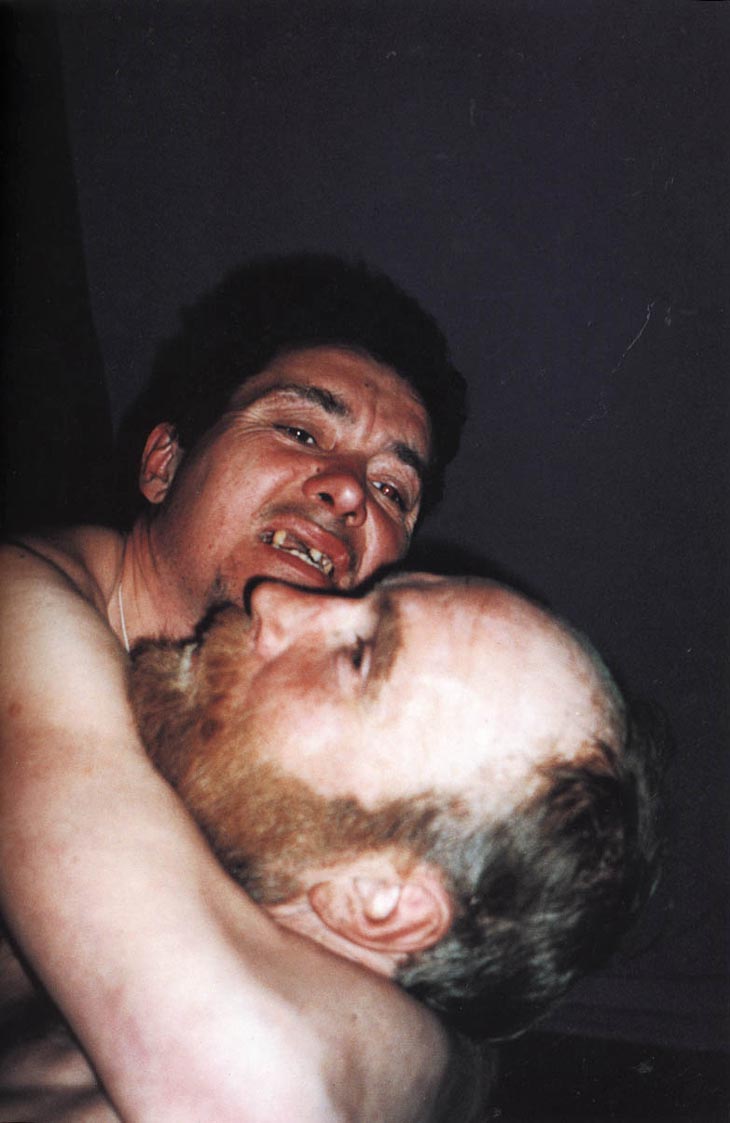
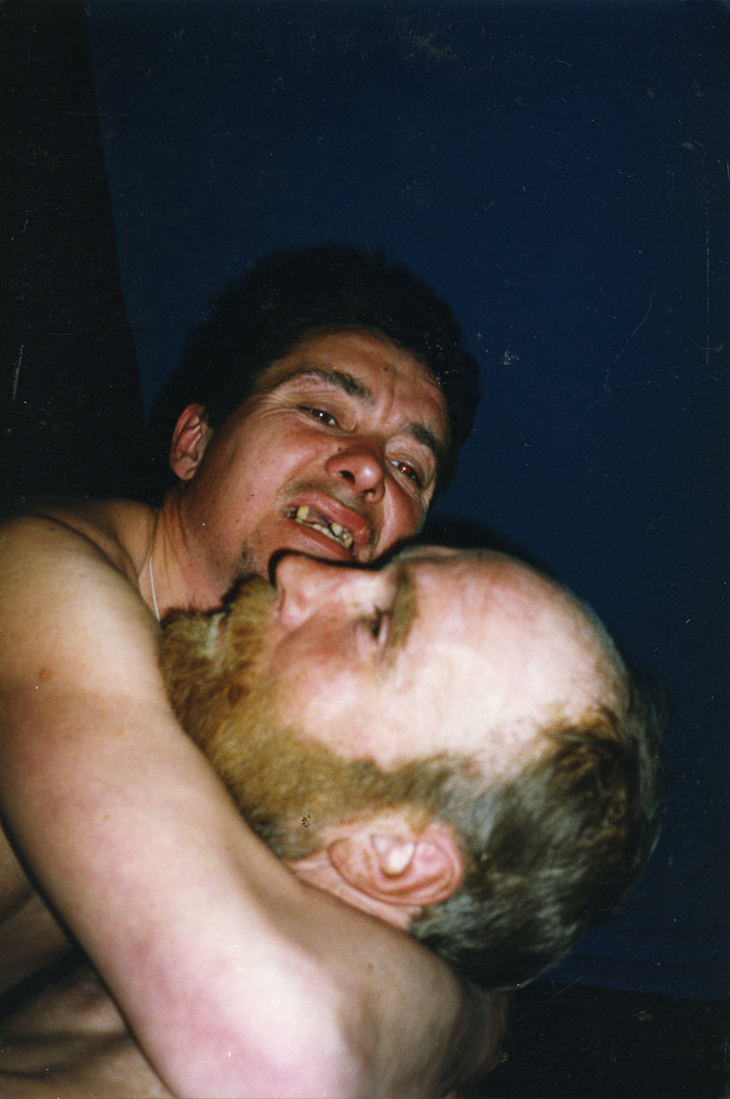

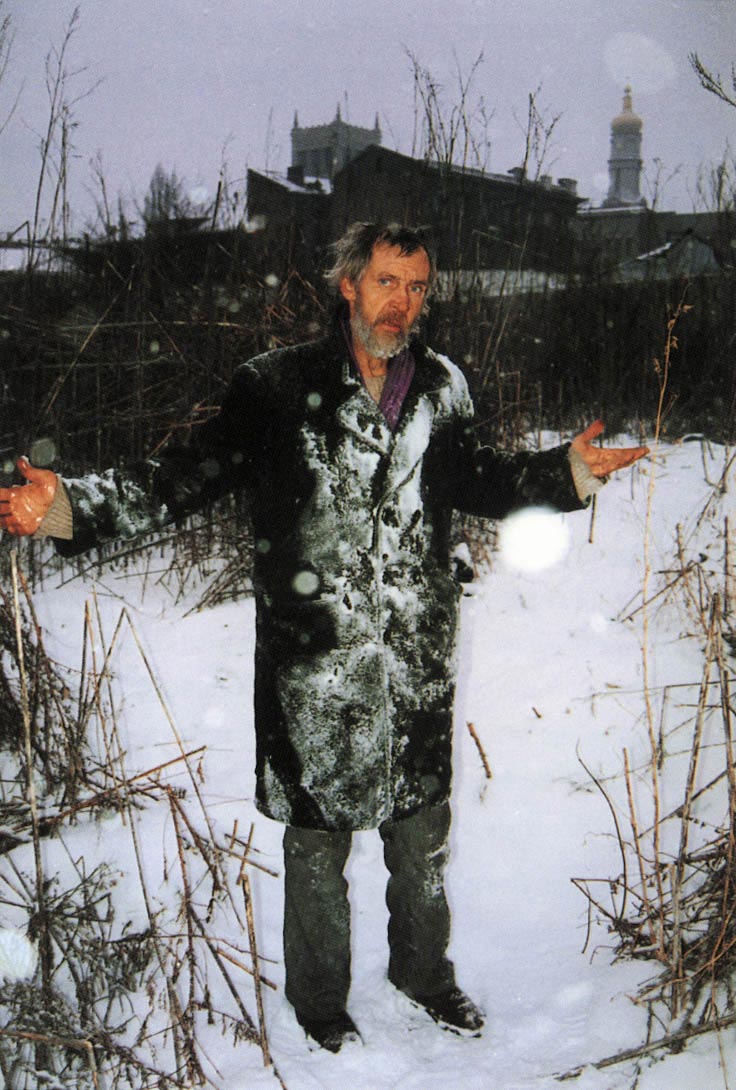
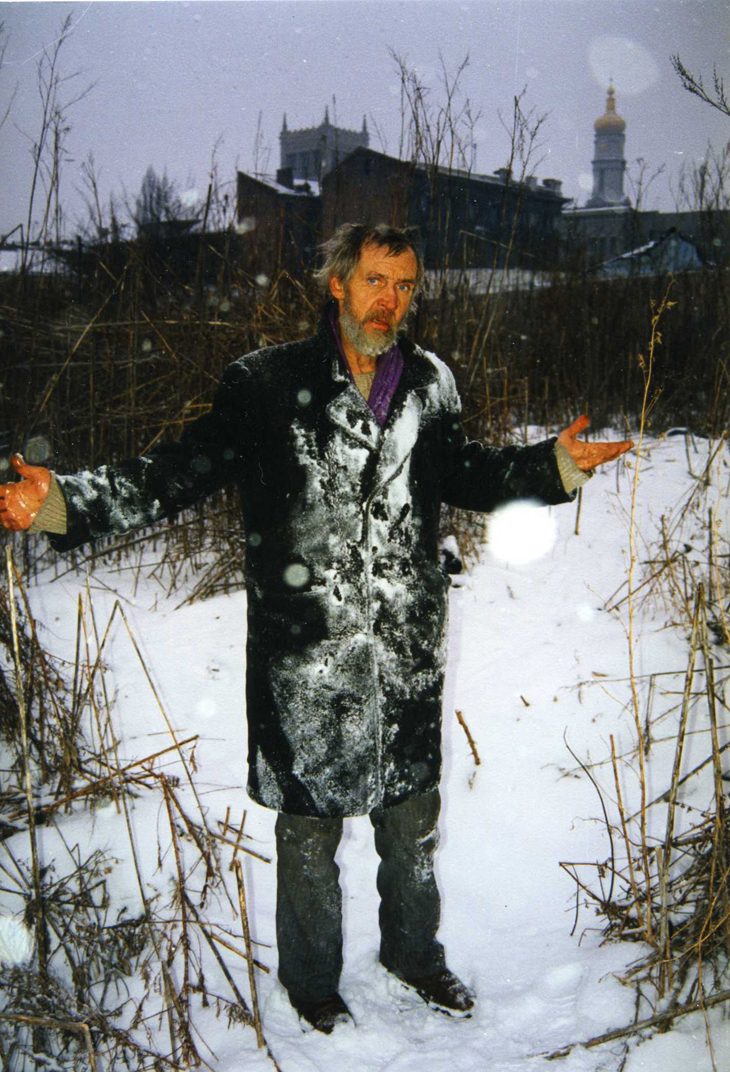
ARTIST:
Boris Mikhailov
“First, these were the people who had recently lost their homes. According to their position they were already the bomzhes (“bomzh” = the homeless without any social support), according to outlook they were simply the people who got into trouble.”
Mikhailov does not avoid the moral complexities of the new Russia and paid his models to pose in an ambiguous intervention that displaces the images from the purely documentary to a form of staged self-consciousness, although ultimately it only underlines the powerlessness of his subjects.
“I am trying to find the unique in that manifold reality itself. Maybe that is exactly what people like, first of all.â€
Case History documents the social oppression, the devastating poverty, the harshness and helplessness of everyday life for the homeless
“I took the pictures displaying naked people with their things in hands like people going to gas chambers.â€
“I tried to capture the feeling of their helplessness, of their social oppression; I once witnessed a scene whereby a strong young man caviled at a poor guy passing by and kicked him hard. I even thought I had heard the poor man’s bones break. Nobody noticed it, either those nearby, or the militia man patrolling close by. I felt guilty, as I often feel guilty of things I see and take pictures of.â€
“What happened on the ruins of the ex-Soviet Empire is still unique. Motivations are different. These guys’ shabbiness is the mirror of the ruin and disappointment of a much larger number of people, most of whom no longer feel safe and wealthy as in the Soviet era; many people’s ideals are gone forever, others have simply gone mad! I have taken pictures of them and I have enjoyed it, and maybe the whole world has a better understanding of the post-communist dramas through these sequences taken directly after nature.â€
“This series of photos is a cycle called "Case History", that I might equally call the "clinical file of a disease". It took shape round 1997-1998. A big city, such as Harkov, offered me a great deal of raw material. And I did not miss it, I did not ignore it.â€
“Many people tell me that they have noticed such guys only after seeing my photos. Before, they didn’t have eyes for them. I could not say that I am a "chronographer" above all, because I am selecting, even sniffing situations for a long time. They say about me, that I proceed like a cat hiding, watching. I am waiting for the best moment to push the button of the camera.â€
“It is a disgraceful world, populated by some creatures that were once humans, but now these living beings are degraded, ghastly, appalling. This "fauna" is specific especially to the period of quasi-general diffidence, specific for most of the post-communist world.â€
“I am not trying to take pictures of sensational things, but rather of those things which are in excess.â€
These particular images first portray the working class of the Cold War era and then the poverty-stricken public, proving that both Perestroika and Glasnost left the people of the Ukraine with much less than they promised.
“First, these were the people who had recently lost their homes. According to their position they were already the bomzhes (“bomzh†= the homeless without any social support), according to outlook they were simply the people who got into trouble.â€
Mikhailov was never trained as a photographer but used the medium as a forum for free exchange which revealed controversial subject matter--such as nudity or the dire poverty that he and others witnessed throughout the neighborhoods of the Ukraine.
Mikhailov- 1999 Case History When used for documentation purposes, the photograph exposes a host of fissures within society, portraying the condition of the immediate environment while simultaneously gauging it in a single snapshot. “"BOMJI". It is a term made of capital letters, recently coined. It literally refers to those people without a stable residence, practically living in the streets, wherever they can stretch their bones.†“I suddenly felt that many people were going to die at that place. And the bomzhes had to die in the first rank, like heroes – as if their lives protected the others’ lives.†Boris Mikhailov, born in 1938 in Kharkov, Ukraine lives and works in the Ukraine and in Berlin. Case History documents Mikhailov’s perception of social disintegration ensuing from the break-up of the Soviet Union – both in terms of social structures and the resulting human condition. Case History documents the social oppression, the devastating poverty, the harshness and helplessness of everyday life for the homeless “Now they are becoming the bomzhes with their own class psychology and “clan†features. For me it was very important that I took their photos when they were still like “normal†people. I made a book about the people who got into trouble but didn’t manage to harden so far.†“I think that the phenomenon I am telling the world about is post-communist and post-Soviet in its essence and that it belongs especially to this world, to the Slavic universe.â€
Mikhailov- 1999 Case History When used for documentation purposes, the photograph exposes a host of fissures within society, portraying the condition of the immediate environment while simultaneously gauging it in a single snapshot. “"BOMJI". It is a term made of capital letters, recently coined. It literally refers to those people without a stable residence, practically living in the streets, wherever they can stretch their bones.†“I suddenly felt that many people were going to die at that place. And the bomzhes had to die in the first rank, like heroes – as if their lives protected the others’ lives.†Boris Mikhailov, born in 1938 in Kharkov, Ukraine lives and works in the Ukraine and in Berlin. Case History documents Mikhailov’s perception of social disintegration ensuing from the break-up of the Soviet Union – both in terms of social structures and the resulting human condition. Case History documents the social oppression, the devastating poverty, the harshness and helplessness of everyday life for the homeless “Now they are becoming the bomzhes with their own class psychology and “clan†features. For me it was very important that I took their photos when they were still like “normal†people. I made a book about the people who got into trouble but didn’t manage to harden so far.†“I think that the phenomenon I am telling the world about is post-communist and post-Soviet in its essence and that it belongs especially to this world, to the Slavic universe.â€
MKH0195.jpg)
MKH0187.jpg)
MKH0257.jpg)
MKH0061.jpg)
MKH0459.jpg)
MKH0189.jpg)
MKH0471.jpg)
MKH0253.jpg)
MKH0279.jpg)
MKH0090.jpg)
MKH0084.jpg)

MKH0107.jpg)
MKH0171.jpg)
MKH0077.jpg)
MKH0063.jpg)
MKH0174.jpg)
MKH0265.jpg)
MKH0269.jpg)
MKH0356.jpg)
MKH0457.jpg)
MKH0447.jpg)
MKH0287.jpg)
MKH0239.jpg)
MKH0235.jpg)
MKH0295.jpg)
MKH0231.jpg)
MKH0285.jpg)



